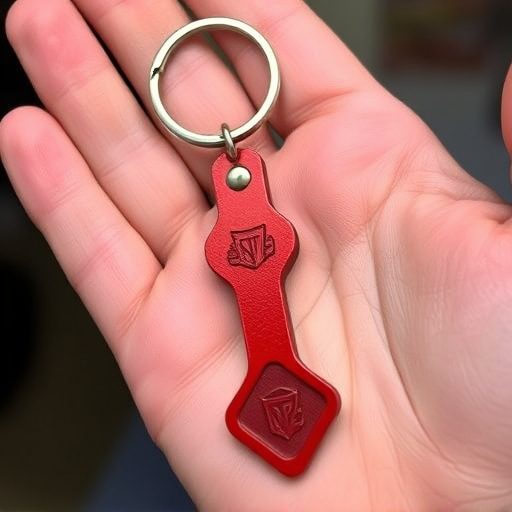Keychain self-defense pressure targets equip users with practical tools to learn and practice striking zones on attackers, enhancing confidence and swift neutralization. Well-designed keychains with robust materials ensure safety and effectiveness. Regular practice sessions improve reaction time and accuracy, while understanding legal landscapes and proper maintenance are crucial for responsible use.
In today’s world, personal safety is paramount. Portable keychain weapons are gaining popularity as convenient self-defense tools. This article delves into the critical aspects of keychain self-defense, focusing on pressure targets for effective training, safety features in design and materials, legal considerations, and maintaining tool integrity. Understanding these key elements ensures responsible use and optimal protection when carrying a portable keychain weapon.
- Understanding Keychain Self-Defense Pressure Targets
- Safety Features: Design and Materials Matters
- Target Practice: Effective Use and Training
- Legal Considerations for Portable Keychain Weapons
- Maintaining Your Keychain Defense Tool's Integrity
Understanding Keychain Self-Defense Pressure Targets
Keychain self-defense tools often incorporate pressure targets, which are designed to teach users effective striking zones on an attacker’s body. These targets simulate vulnerable areas like the eyes, throat, groin, and knees, allowing individuals to focus their force in critical spots during a defense scenario. Understanding these pressure points is crucial for anyone considering carrying a portable keychain weapon for self-protection.
By familiarizing themselves with keychain self-defense pressure targets, users can enhance their confidence and improve their ability to disable an aggressor quickly. These tools are intended to provide individuals with a sense of empowerment and the skills to protect themselves in various situations, ensuring they have a strategic advantage when facing potential threats.
Safety Features: Design and Materials Matters
The design and materials used in crafting a keychain self-defense tool play a pivotal role in its overall safety and effectiveness. A well-designed keychain weapon should incorporate several key features to ensure user safety, such as pressure targets that provide precise control during deployment. These pressure targets act as triggers or releases, allowing users to deploy the tool with minimal effort and accuracy.
High-quality materials are equally crucial. The best keychains use robust, durable metals for the main structure, ensuring longevity and resistance to everyday wear and tear. Additionally, non-toxic, ergonomic grip coatings prevent accidents by providing a secure, comfortable hold. These safety features not only enhance the user’s control but also reduce the risk of injuries that could result from improper or panicked use.
Target Practice: Effective Use and Training
Regular target practice is essential for anyone considering a keychain self-defense weapon like pressure targets. These small, portable devices are designed to simulate real-life threats and improve your reaction time and accuracy. Set aside dedicated practice sessions to familiarize yourself with the weapon’s mechanics and firing range safety protocols. Start at a safe distance and work your way closer as you gain confidence.
Focus on consistent shooting patterns, aiming for specific areas of the target to simulate various self-defense scenarios. Train with both hands to enhance dexterity and adaptability. Remember, the goal is not just to hit the target but to do so effectively and precisely, ensuring that you can defend yourself confidently in a real-world situation.
Legal Considerations for Portable Keychain Weapons
When considering portable keychain weapons, such as self-defense devices designed for ease of carry, it’s crucial to understand the legal landscape surrounding their use. Different regions have distinct laws and regulations governing the possession and application of personal defense tools, including pressure targets for practice and training.
Before acquiring a keychain weapon, individuals should familiarize themselves with local statutes. Some areas may permit self-defense devices under specific conditions, while others might restrict or prohibit them entirely. Ensuring compliance with these legal considerations is essential to avoid legal repercussions and maintain the safety of the user and others around them. Additionally, understanding the rules regarding storage, transport, and potential restrictions on certain features like trigger mechanisms can help responsible owners utilize their keychain self-defense tools appropriately.
Maintaining Your Keychain Defense Tool's Integrity
Regular maintenance is crucial for ensuring your keychain defense tool remains reliable and safe. Over time, the sharp edges of the weapon can dull, reducing its effectiveness during an emergency. It’s important to sharpen the blade periodically using a suitable whetstone or sharpening tool designed for small blades. Additionally, check for any signs of damage, corrosion, or wear on the overall structure. Replace worn-out components, such as springs or lock mechanisms, to maintain optimal performance.
When it comes to training, practicing with your keychain self-defense tool against pressure targets can help you develop muscle memory and precision. These targets simulate various attack scenarios, allowing you to refine your aim and improve your reaction time. Remember, the better prepared you are, the more confident you’ll feel when facing a potential threat. Always store your keychain defense tool in a secure case or pouch to prevent accidental activation and keep it sharp and ready for action when needed.
In conclusion, while keychain self-defense weapons offer a convenient and portable option for personal safety, it’s crucial to understand their design, materials, and legal implications. Regular target practice and proper training ensure effective use. Always prioritize safety by maintaining the integrity of your device and staying informed about local laws regarding portable keychain weapons, such as Keychain Self Defense Pressure Targets.
